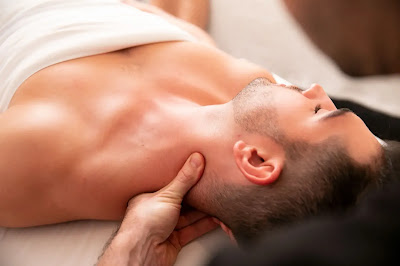A Comprehensive Guide to Your Swedish Massage Experience
Swedish massage, celebrated for its therapeutic and soothing effects, offers a unique wellness journey that many have yet to explore in depth. This guide aims to demystify this popular massage therapy by providing a detailed look into what entails a Swedish massage session. From its historical roots to the key techniques used, this exploration will help you understand how to maximize the benefits of your Swedish massage.
Whether you’re a massage enthusiast or a newcomer eager to learn, this guide promises to provide valuable insights to enhance your overall experience and expectation of this treatment.
The Fundamentals of Swedish Massage
Swedish Massage involves a variety of techniques designed to relax muscles by applying pressure against deeper muscles and bones, and rubbing in the same direction as the flow of blood returning to the heart. The origin of this technique dates back to the early 19th century, invented by Pehr Henrik Ling. This method is renowned for improving circulation, easing muscle tension, and enhancing overall well-being.
The core techniques of Swedish Massage include effleurage (smooth, gliding strokes), petrissage (squeezing, rolling, or kneading), tapotement (light, rhythmic tapping), friction (firm, deep, circular rubbing motions), and vibration or shaking. These techniques vary in pressure and speed, which allows the massage therapist to customize the session according to individual needs and preferences.
Moreover, Swedish Massage not only focuses on physical relaxation but also promotes psychological relief, helping to decrease stress and enhance mood, thereby nurturing a sense of well-being and connection.
Embarking on Your Swedish Massage Journey
Your journey into Swedish Massage begins with a preliminary consultation with your therapist to discuss your medical history and any specific ailments or conditions. This conversation ensures that the massage is customized to your personal health and wellness objectives.
During the massage, your therapist will start with gentle strokes to relax your outer muscles before moving to deeper techniques aimed at relieving tension in more targeted areas. Methods such as kneading, friction, and rhythmic tapping are employed to stimulate muscle tissues, release knots, and enhance circulation.
After your massage, it’s common to experience profound relaxation and even a slight dizziness due to the intense release of toxins and tension. It is important to stay hydrated post-massage to aid the body in flushing out these toxins and to maximize the benefits of your session.
Conclusion
Conclusively, Swedish massage offers more than just relaxation; it is an integrative approach to enhancing both physical and mental health. Understanding its methodologies and preparing for your session can significantly amplify the therapeutic benefits, making it a profound experience of holistic healing and relaxation.
This guide not only clarifies the intricacies and benefits of Swedish massage but also encourages you to embrace this soothing practice as part of your regular wellness regimen.




Comments
Post a Comment